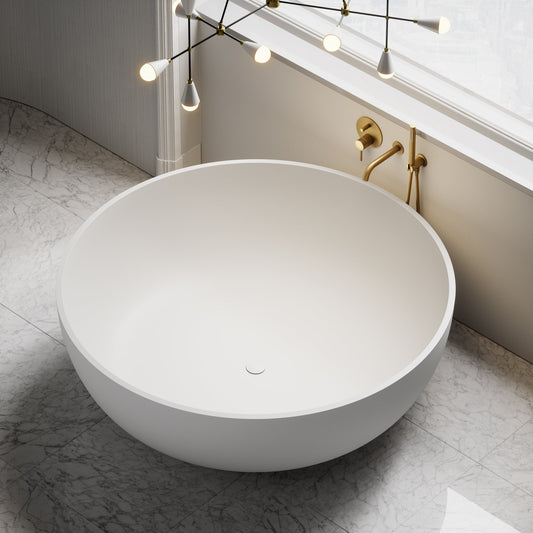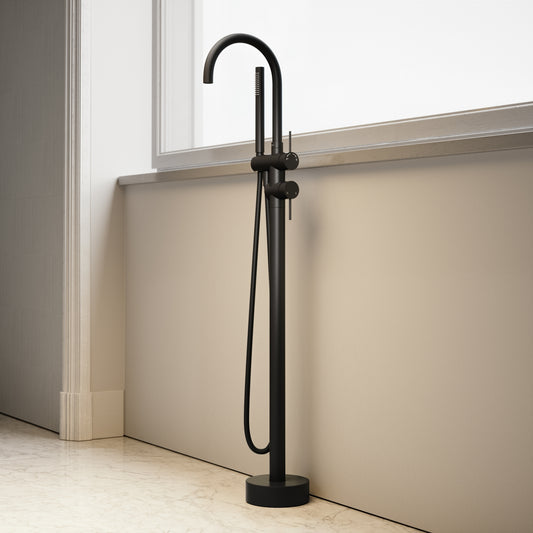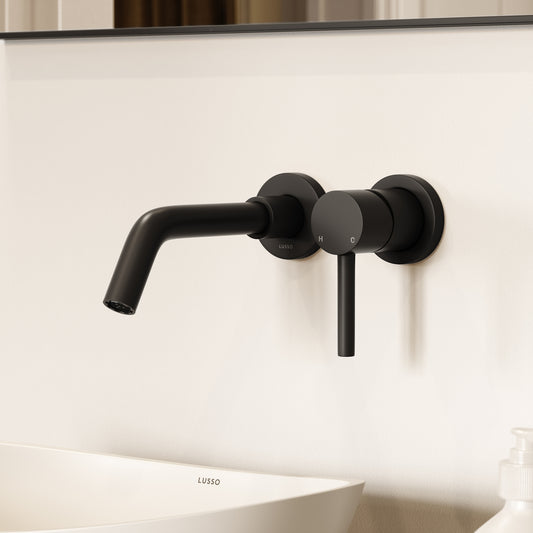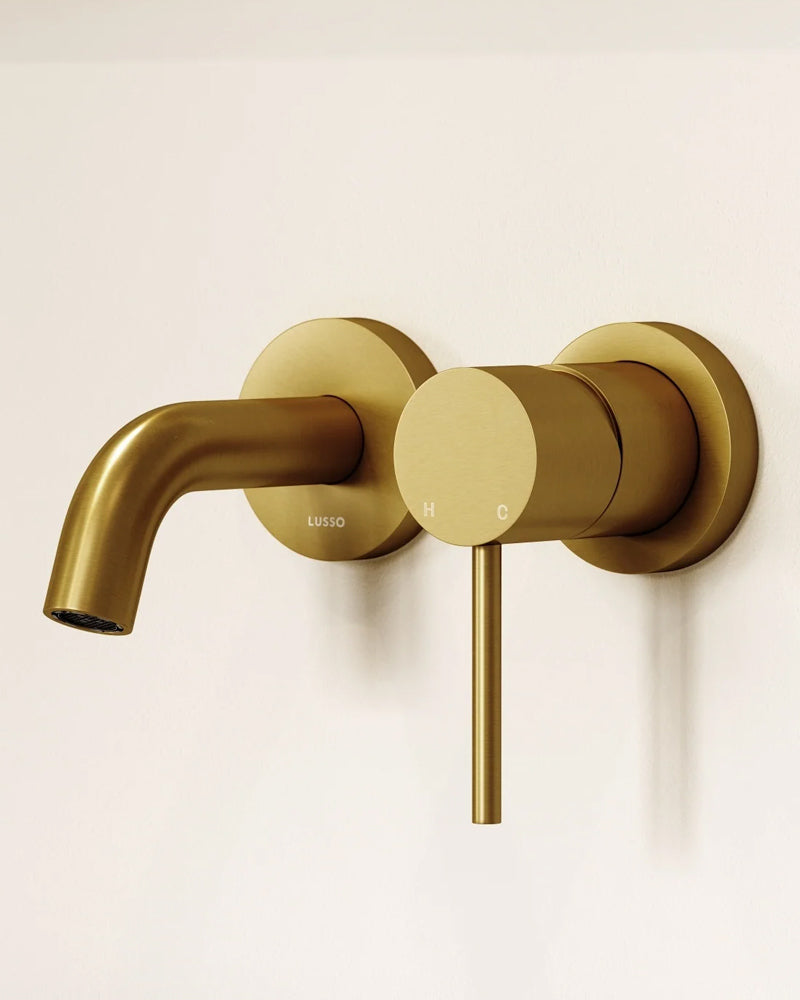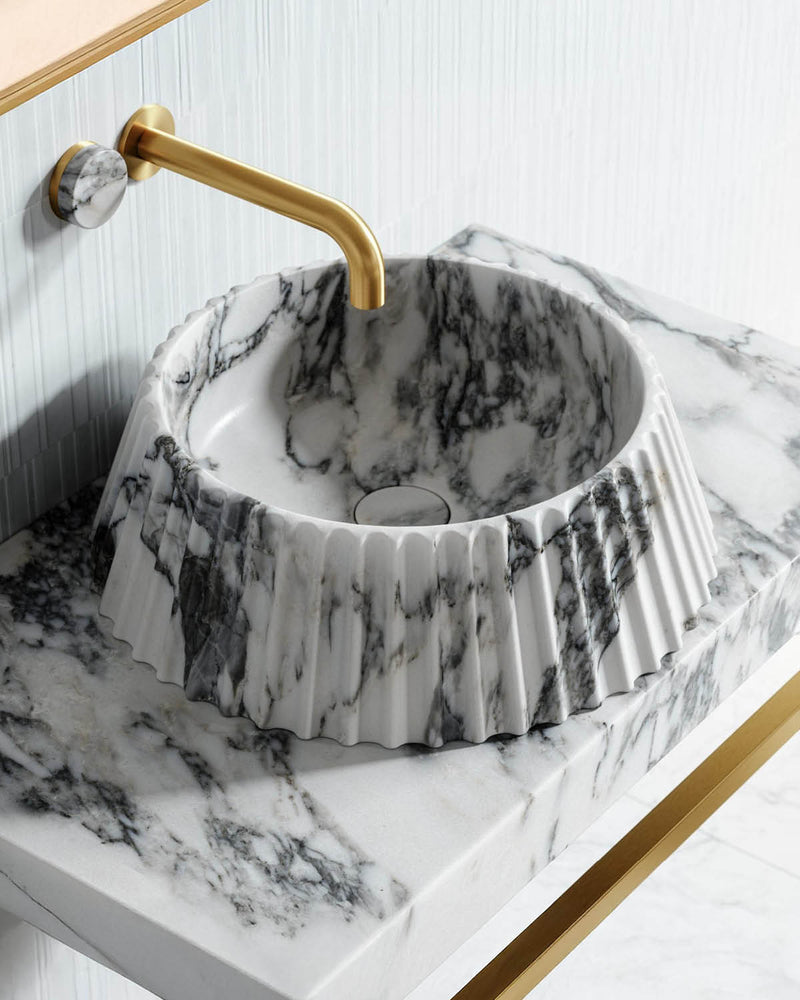
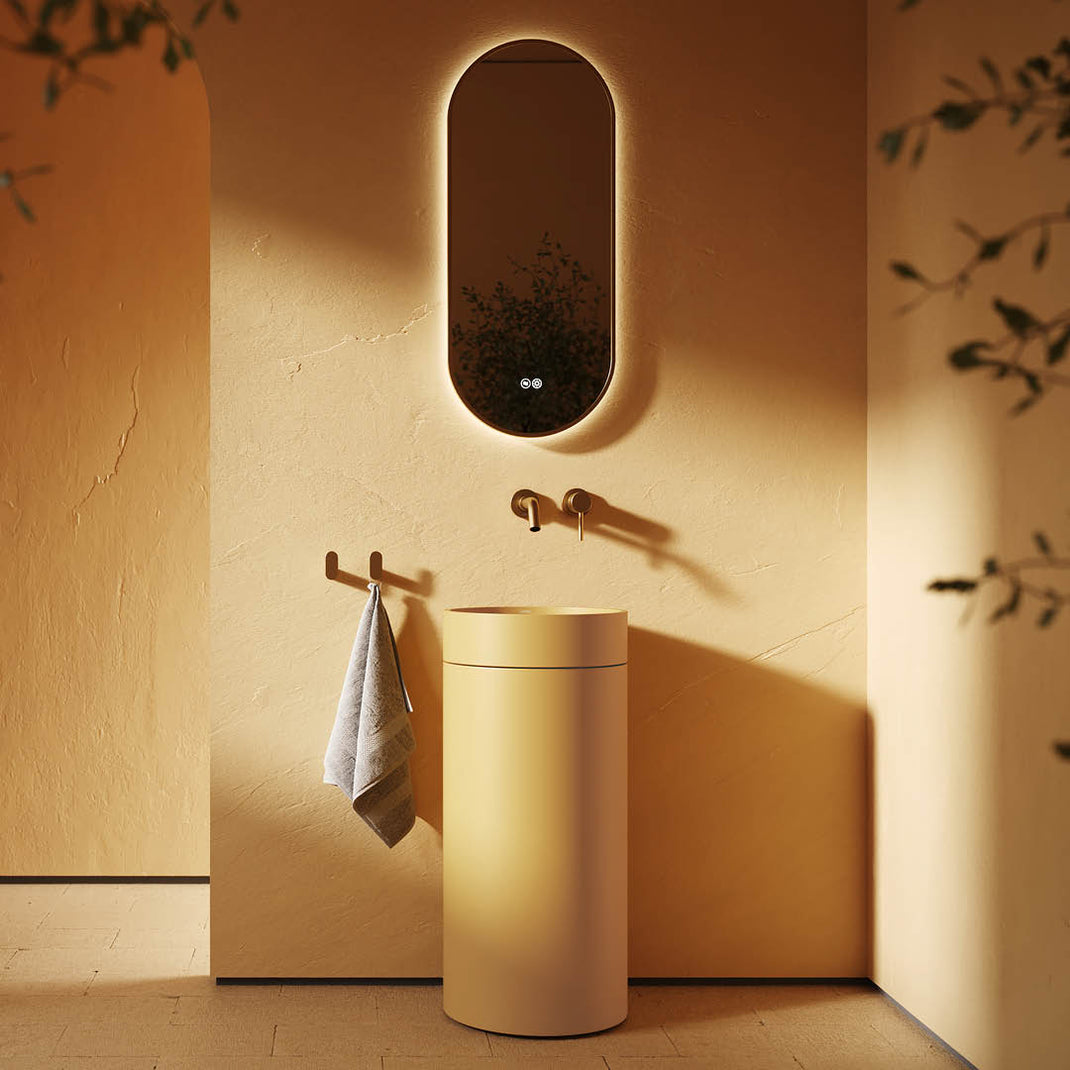
INSPIRATION
6 Evolving Interior Design Trends for 2025
Interior design is in a constant state of evolution, shaped by cultural shifts, technological advancements, and an ever-growing desire for self-expression. As we step into a new era of luxury interiors, the fusion of warmth, boldness, and textural diversity defines the most sought-after aesthetics.
What are the latest trends in interior design?
From warm minimalism to playful maximalism, the latest interior design trends encapsulate a refined yet daring approach to creating spaces that resonate with both comfort and personality. In this exploration of trend forecasting interior design, we delve into the dominant styles, materials, and influences that are defining the luxury interiors of the future.


1
/
of
4
-
Notion Freestanding Round Stone Bath 1500mmRegular price £2,397.00 (£1,997.50 EX VAT)Regular priceUnit price / per
£2,597.00Sale price From £2,397.00 (£1,997.50 EX VAT)CORTESE®
Regular price £2,397.00 (£1,997.50 EX VAT)Regular priceUnit price / per£2,597.00Sale price From £2,397.00 (£1,997.50 EX VAT)Sale -
Luxe Matte Black Floorstanding Bath Shower Mixer TapRegular price £497.00 (£414.17 EX VAT)Sale price £497.00 (£414.17 EX VAT)Unit price / per6 OptionsRegular price £497.00 (£414.17 EX VAT)Sale price £497.00 (£414.17 EX VAT)Unit price / per
Colour Black -
Alina White Cylinder Freestanding Stone Basin 400mmRegular price £597.00 (£497.50 EX VAT)Sale price £597.00 (£497.50 EX VAT)Unit price / per
-
Luxe Matte Black Wall Mounted Basin Mixer Tap V1Regular price £237.00 (£197.50 EX VAT)Sale price £237.00 (£197.50 EX VAT)Unit price / per7 OptionsRegular price £237.00 (£197.50 EX VAT)Sale price £237.00 (£197.50 EX VAT)Unit price / per
Colour Black
Bold Maximalism
Maximalism, once seen as a chaotic and overwhelming style, has evolved into a highly refined, sophisticated interior design trend that celebrates personality, creativity, and self-expression.
Modern maximalism focuses on curating layers of colour, patterns and texture to build immersive, storytelling spaces. The challenge is in achieving boldness without sacrificing elegance, a feat that designers are mastering through careful selection of materials, finishes and decor elements.
Maximalism can bring a unique vibrancy to any space, and when executed correctly, it exudes a luxurious aura that is both eclectic and opulent. It harmonises diverse influences, from rich jewel tones to global-inspired patterns, that create environments that are inviting and interesting.
This latest interior design trend allows for infinite customisation and personalisation, turning every space into an experience. The aim is to strike a balance between eccentricity and sophistication to avoid your home feeling overwhelming. As the opposite of minimalism, maximalism celebrates excess, boldness and eclecticism. It has become increasingly popular among interior designers and homeowners who want to make a statement in their living spaces.
Maximalism can be used in any room throughout the home. To bring this style into the kitchen, begin by embracing rich, deep colours such as emerald greens, dark sapphire blues and burgundy hues, which can be incorporated through wall tiles and countertops. This offers a pop of colour and can be paired with metallic accents such as brushed gold kitchen taps and hardware to elevate the space further and inject a touch of glamour.
One of the hallmark features of maximalism is the use of bold, expressive patterns and decor. Unlike any other interior design styles, which adhere to one specific aesthetic, maximalism allows for an eclectic mix of styles and influences. A maximalist space often features traditional furniture pieces alongside modern accents or vintage items combined with contemporary decor. This mix-and-match approach creates a unique, personalised space that reflects individual character and interests.
Choose floral patterns, geometric designs or even striped prints that make a statement. When selecting patterns, consider the scale, as oversized patterns can transform an ordinary wall into a work of art.
Maximalism thrives on the juxtaposition of different materials and textures. Incorporating marble with dramatic veining combined with matte or polished finishes creates a visual contrast and sense of richness. Style Jade Green marble with metallic accents such as chrome or gold to achieve a luxury yet maximal aesthetic.
“Minimalism isn’t about eliminating everything—it’s about making intentional, thoughtful choices.”
Ola Jachymiak-Bigo, Interior Designer

Warm minimalism is a soft and inviting iteration that embraces warm neutral palettes, natural materials and organic forms.

Our cappuccino finish is the perfect pairing for a warm minimalism bathroom.
Warm Minimalism
Minimalism has long been associated with stark, almost clinical interiors, but this interior design trend has undergone a significant transformation. Enter warm minimalism, a softer and more inviting iteration that embraces warm neutral palettes, natural materials and organic forms to create serene spaces.
This approach to minimalism prioritises comfort, with plush furnishings, layered textiles, and subtle tonal variations replacing rigid, impersonal aesthetics. Key elements include warm-toned woods, muted earth tones, and stone surfaces with matte finishes.
Our cappuccino and velvet beige finishes are the perfect pairing for a warm minimalist bathroom. They display a soft and subtle beige tone that adds a sense of warmth and modernity. These finishes can be incorporated through vanity units that seamlessly blend with the minimalist appeal.
The easiest way to achieve warm minimalism is by using warm neutrals as the base colour palette. Focus on creamy white, ivory, beige, oatmeal tones and soft browns to add a touch of warmth and cosiness.
Warm minimalism invites a feeling of comfort, creating an opportunity to include personal items. Highlight spaces that exude tranquillity and avoid over-accessorising. Opt for a few decorative pieces that add texture and personality such as stools, linens and ceramics. The aim is to blend clean lines with natural, tactile materials to create a calm, modern space that is also deeply inviting.


Mixed Materials and Textures
Luxury interiors are moving beyond single-material dominance to embrace a more dynamic interplay of textures and materials. The contrast of polished and raw, hard and soft, matte and glossy creates depth and interest within a space, ensuring that every surface offers a unique tactile and visual experience.
Pairing brushed gold brassware with raw concrete or smooth marble with rustic reclaimed wood brings a sense of thoughtful contrast. This latest interior design trend embraces the broader movement toward sensory-driven design, where interiors are not just visually appealing but also rich in texture and feel. Decor with mixed compositions, such as the Chic vanity unit that combines stone or marble basin with an oak wood unit, exemplifies this sophisticated approach.
To bring this interior design trend to life in your home, consider layering different textures within a single space to create visual interest. A kitchen could feature mixed finishes, such as matte wood cabinets and glossy countertops, completing the look with metallic fixtures. In the bathroom, a blend of glazed mosaic tiles, brushed metallic accents, and soft linens create a serene ambience.
Instead of overwhelming your space, try to keep your design simple, with attractive splashes of texture rather than a huge statement block. Randomly contrasting materials and textures will create a visual impact on your room instead of just one space.
Sustainability
Sustainability has become a fundamental pillar of luxury design, shaping the latest interior design trends with eco-conscious materials, responsible craftsmanship, and energy-efficient solutions. Homeowners are increasingly prioritising sustainable choices without compromising on style, opting for interiors that are as mindful as they are luxurious.
Consider investing in high-quality, long-lasting pieces crafted from sustainable materials such as FSC certified wood, bamboo and recycled metals. Natural textiles such as organic linen and wool not only reduce environmental impact but also create healthier indoor spaces.
Invest in items that are designed for life. Consider where materials come from, how they will be used and what will happen to them in the future. Opt for materials that can be regenerated, reused and recycled like our Cortese® Stone Composite which is renowned for its durability and long-lasting luxury.
The use of energy-efficient appliances in the kitchen aligns with this evolving trend. Water-saving fixtures such as boiling water taps and sustainable tile choices can elevate your space into an eco-conscious room without sacrificing elegance.
Beyond materials, sustainability is about intentional design - spaces that are built to last and adapt over time. By prioritising quality over quantity and investing in timeless craftsmanship, homeowners can create interiors that are not only stylish but also aligned with the future of responsible luxury.
“Marble, a natural stone, aligns with this trend, especially as consumers opt for high-quality, long-lasting materials over synthetic or short-term alternatives.”
Amy Hardman, Managing Director of Amy Nicholas Interiors


Retro Revival
A sense of nostalgia is influencing the latest interior design trends, with mid-century and 1970s inspired elements making a striking comeback. This retro revival is less about replication and more about reinvention - classic design motifs are being reinterpreted with contemporary materials, fresh colour palettes and modern functionality.
The original retro style began in the 1960s as post-war designers looked to create a bright and bold style of ‘hope’. This style had a fun and lively appeal that people are looking to revive in their homes today, making it one of the latest interior design trends.
Curved furniture, terrazzo tiles, and tinted glass are key features of this trend, bringing an element of playfulness and history into modern spaces. Warm woods such as walnut reappear in decor, paired with plush upholstery in rich hues such as mustard, terracotta and olive green.
Homeowners and interior designers who are gravitating towards the retro revival trend are looking for a slower paced life that appreciates original pieces and their nostalgic appeal. The inclusion of vintage lighting, from globe pendants to sculptural floor lamps, further enhances the nostalgic yet forward-thinking ambience of a retro revival space.
To incorporate this trend into your home, start with statement furniture pieces that embrace curved silhouettes and retro material such as velvet and boucle. In your kitchen, choose terrazzo tiles and vintage appliances in earthy tones. Bathrooms can embrace the retro revival with freestanding baths, checkerboard floor tiles, and brass fixtures that exude traditional charm while maintaining a contemporary appeal. The best way to achieve this trend is by combining nostalgic elements with modern updates, ensuring your space feels stylish rather than outdated. It’s important to incorporate it tastefully to avoid clashing, with the use of warm, saturated colours, fluent lines, layered textures and vintage accents.
The retro rival aesthetic is characterised by timeless silhouettes that have a lived-in feel. A sister style to mid-century modern decor, retro revival embraces vibrant heritage styles and timeless pieces that are full of character and charm. This trend is exponentially growing due to homeowners wanting eclectic interiors that tell a story and engage conversation between past and present.
dark and dramatic
While light and airy interiors remain timeless, there is a growing resurgence of dark and dramatic spaces. Rich, deep colour palettes featuring charcoal, navy and forest green create a sense of intimacy and refinement, particularly in living spaces and bedrooms.
These moody interiors are further enhanced by layered lighting, from warm accent sconces to bold sculptural chandeliers. The use of high contrast materials such as dark-stained wood against deep toned walls paired with reflective surfaces adds an element of luxury and interest.
Incorporate this trend by opting for richly pigmented wall colours, paired with plush textures like velvet drapes, wood and brass accents such as matte black and aged bronze. Kitchens can embrace dark cabinetry with contrasting countertops, while bathrooms can achieve a moody aesthetic with back marble, brass fixtures and dramatic lighting. Layering textures such as silk, wool and leather within the design ensures warmth, preventing the space from feeling too stark. Thoughtful light placement, from dimmable sconces to statement pendant lights, adds further depth and ambience, making these interiors feel luxurious rather than too much.
The secret to a successful dark interior design is balance. Incorporating a mix of textures and lighter tones prevents the space from feeling too heavy. Light coloured decor doesn’t just create contrast - it adds depth and structure. This doesn’t mean placing a stark white bath against black or navy walls, but rather softening a moody colour palette with lighter shades like charcoal or earthy hues. Subtle hints of contrasting light accessories can further enhance the space, keeping it visually dynamic and inviting.
Stay ahead of these evolving interior trends by creating a truly bespoke home that reflects your unique taste and values. Explore the latest interior design trends across Our World and discover further inspiration on our Instagram.
